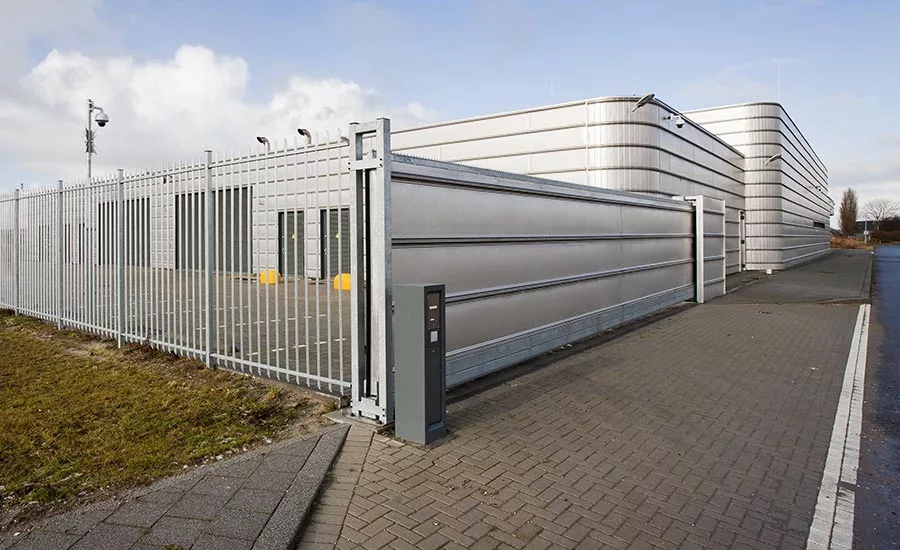How to Protect Sub-Perimeters with Advanced IP Technology

By definition, a perimeter is the outer boundary, and securing that perimeter means protecting that area. Everything has a perimeter, from a large university campus to your own personal space on that campus. Law enforcement and security personnel have predefined outer perimeters that keep people either in or out in the case of an event. But you should also look within the perimeter to criticalities that could present problems.
Engineering labs storing equipment or chemicals, on-campus hospitals, dormitories and others all have boundaries of concern and importance. Known as sub-perimeters within the main perimeter, they fall into three main categories: those that require general security, those where processes must be secured, and those where security is employed for safety purposes.
For example, within a hospital on a campus, there are additional sub-perimeters that need security. A pharmacy might have access control and/or monitoring to protect the entry and might also employ additional security where narcotics might be stored.
It’s no longer enough to focus all your efforts on keeping unauthorized individuals out of a facility, building, etc. There are a number of additional concerns, such as espionage or monitoring critical equipment and processes, that come into play within these smaller areas inside the overall perimeter.
Should someone breach a sub-perimeter, they could sabotage or steal equipment or wiring, causing a plant shutdown, which could lead to millions of dollars in lost revenue. In addition to securing areas to keep people out, it’s also important to monitor the assets that are critical to the operations of a facility from both a security and process standpoint. Consider the ramifications of a piece of equipment that is prone to heating up, potentially causing a failure followed by a shutdown.
Therefore, these sub-perimeters must be addressed with the same level of security and technology as the outer perimeter, often with the same types of solutions.
IP-based technology is one of the main drivers behind innovation and new solutions for protecting different layers of facilities more effectively than in the past.
For example, a critical infrastructure facilities in the past, you had a fence, a guard post and maybe barbed wire and possibly a black-and-white camera at the guard shack to watch the entry.
Today, newer devices – such as access control, speaker systems, subterranean sensors, radar sensors and others – have become less expensive, opening up these types of vertical markets for enterprise or critical infrastructure-type applications. Thanks to the Internet of Things phenomenon, the list of IP-based solutions continues to grow due to increases in processing power and available bandwidth. This has created a number of solutions that are ideal for protecting critical sub-perimeters. New lower-cost housings for hazardous areas within the perimeter are now available, so class 1, division 1, zone 1 areas can now have cameras monitoring the process and activity in these hazardous areas.
IP Camera Advancements
From a surveillance camera perspective, processing power of the chipsets on the back end of cameras has become a key differentiator in the marketplace. This edge-based processing has led to powerful software and analytics capabilities, which decreases bandwidth by processing high-resolution images on the edge rather than sending video back to a central location for server-based analysis. Low-light technology is another advancement that has made cameras more powerful today than ever. In a sub-perimeter, cameras can be used to zoom in on a pressure gauge to visually verify that it is within accepted parameters without sending a person out to perform that task.
Thermal Cameras
Once considered mainly for installation on outer perimeters to detect people, objects or events in darkness, thermal cameras have become less expensive today, creating additional uses, such as monitoring the temperature of critical equipment to detect a possible failure before it can occur. Pan-tilt capabilities allow cameras to switch views between multiple critical areas and devices throughout the day. If the temperature has elevated or decreased beyond a predetermined threshold, the camera can generate an alarm to a command center. Prior to IP devices, this would require someone to investigate in person whereas today, additional advanced technologies like optics allow operators to view a situation remotely.
Short-Range Radar
An affordable solution that offers a 150-foot range and operates on a low frequency, radar doesn’t require a license to install a solution to monitor 120 degrees at 165 feet and can classify objects as a person or a vehicle, filter out what the object is and track a target in real time. Like thermal cameras, radar is not affected by environmental challenges such as fog or rain. This makes radar a powerful solution that can be installed within a perimeter for a number of purposes, including controlling access at a materials yard or a substation, providing an additional layer of detection and security on top of surveillance cameras. And while thermal cameras are more cost-effective than in the past, radar offers an even lower-cost alternative.
Sound and Communication
The ability to communicate with and provide ambiance at a site may not be top of mind when it comes to security, process or safety, but but both have strong applications for protecting sub-perimeters, enabled primarily by IP-based speakers.
Voice over IP (VoIP) allows users to deliver voice commands via speaker systems over the IP network to direct egress from a facility in case of fire, chemical leak, active shooter, critical weather event or other emergency. These solutions can also be used to notify unauthorized individuals who enter a sub-perimeter that they are not allowed to be in the area. While two-way VoIP is no replacement for first responders’ direct communication using walkie-talkies, it is excellent for emergency communications.
In non-emergency situations, the same system can be used to provide music to a location via an IP-based speaker. From a background perspective, music is a powerful tool for providing the desired atmosphere for schools, retail establishments, hospitals and other applications.
Shared Situational Awareness
All these IP devices generate data that can be shared thanks to their interconnectivity. The combination of networked devices allows end users to obtain, assess, analyze and share data in real time between systems and solutions, and the intelligence gleaned from all this data and analysis creates a shared situational awareness, which enables beneficial early intervention for both security and preventative maintenance.
The ability to set and monitor parameters within a larger area is key for security, processes and safety. For example, if a perpetrator comes into an area, radar, thermal and traditional cameras can be combined to provide real-time situational awareness for first responders, who can track a situation minute by minute and adapt to evolving conditions to ensure the safest, fastest and most effective response.
While much of the focus is on protecting outer perimeters, the potential fallout from events or situations in smaller areas within that larger area make protecting sub-perimeters equally vital from security and safety perspectives.
Advances in IP-based technologies allow end users to deploy a variety of interconnected systems to deliver security, process monitoring and safety within sub-perimeters. By sharing data, these solutions provide layered protection and real-time awareness that allows problems to be addressed proactively before they can become catastrophic.
Looking for a reprint of this article?
From high-res PDFs to custom plaques, order your copy today!









